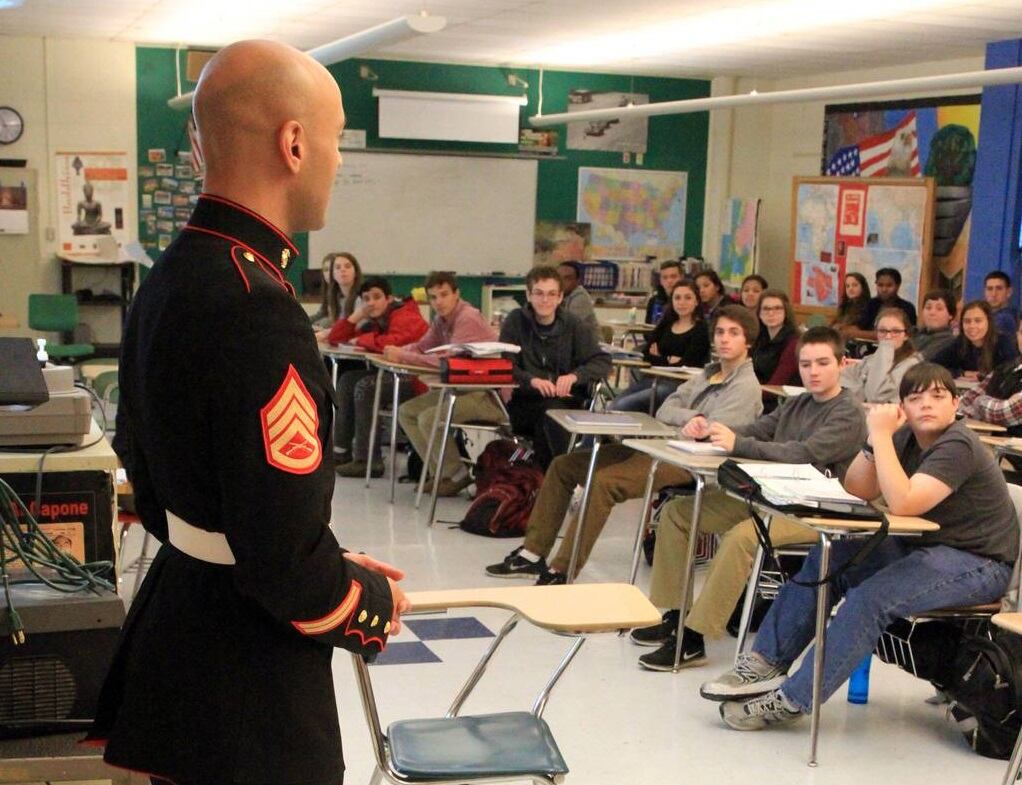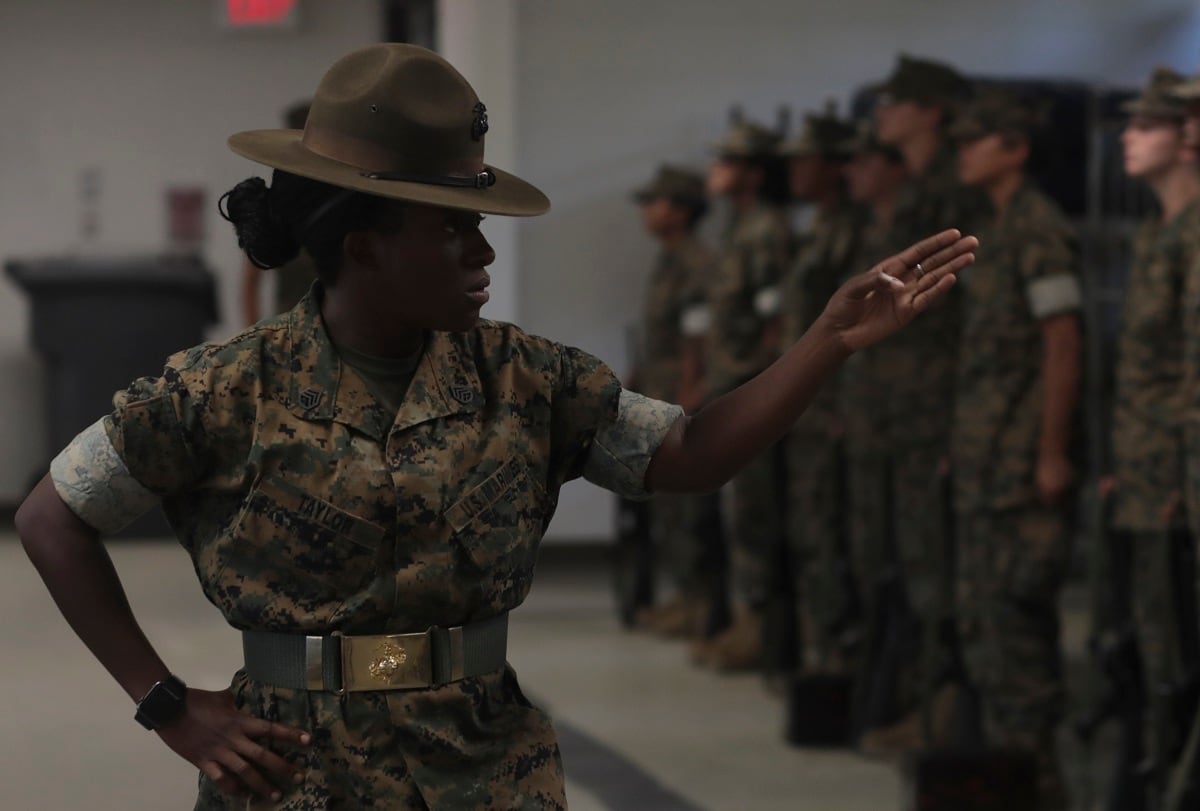To make gender integration at boot camp happen, the Marine Corps will need to add more than 70 women drill instructors ― a growing challenge that may make it more difficult for enlisted women to pursue other Marine Corps opportunities.
With the passing of the fiscal year 2020 National Defense Authorization Act the Marine Corps was bound by law to end segregated training in boot camp at both Marine Corps recruit depots.
Marine Corps Recruit Depot Parris Island, South Carolina, was given five years to comply, while Marine Corps Recruit Depot San Diego, which at the time had never trained any female Marines, was given eight years to comply.
Initially members of Congress believed the Corps would integrate at the platoon level. But the law was not explicit, and the Corps seems to be pursuing a path that would see it integrate at the company level.
Those companies would see five all-male platoons train alongside one all-female platoon.
But even that level of integration would require the Corps to go from 134 women drill instructors to 207, according to documents the Marine Corps provided to Congress, which were viewed by Marine Corps Times.
RELATED

The Corps hope to run 30 integrated companies through Parris Island, South Carolina, by 2024, and for San Diego another 30 integrated companies by 2026.
With enlisted women making up fewer than 9% of the enlisted Marine Corps, filling those billets may prove a challenge, the Marine Corps said in the document.
“Increasing the number of female DIs competes with requirements and opportunities for experienced female Marines in Recruiting, Combat Instructor, Marine Security Guard, and Fleet Marine Force (FMF) billets,” the document said.
The issue will be particularly bad between fiscal year 2024 and fiscal year 2026, due to a significant drop in recruiting numbers due to the COVID-19 pandemic, according to the document.
The Marine Corps has a mechanism, known as the Headquarters Marine Corps Special Duty Assignments Screening Team, or HSST, that forces Marines to apply for special duty assignments when it does not reach the minimum number of volunteers.
However, Marines selected for the HSST list historically leave the Corps at a higher rate.
This could mean the need for more women in drill instructor billets may lead to the Marine Corps struggling to retain more women deep into their career.
RELATED

With the launching of its Talent Management 2030 plan, the Marine Corps is moving to a more retention-focused model that aims to produce a more experienced, smarter and fitter Marine Corps.
The Corps already has started experimenting with ways to increase the number of volunteers for one of the other hard to fill special duty assignments: recruiters.
In 2020 the Marine Corps saw an increase in the number of Marines who volunteered for recruiting duty, but there was still a significant shortfall in the numbers needed to fill the class.
Kyleanne Hunter, a Marine veteran and an adjunct fellow at the Center for New American Security, said she is impressed with where the Corps is going in terms of talent management, but noted it still has a long way to go to improve the recruiting and drill instructor fields.
“There’s issues with male retention there, there are just so many more men that we tend to not talk about it that much,” Hunter, a former Marine Corps AH-1W Super Cobra pilot, told Marine Corps Times in a Thursday phone call.
The Corps will attempt to mitigate some of these issues by “increasing the screening of the eligible female Marine population while proportionately adjusting the SDA assignments,” according to the documents given to Congress.
The Marine Corps has attempted to focus advertisement campaigns more toward women, in 2021 showed some limited success increasing the number of women in the Marine Corps from about 8% in 2018 to about 9% in 2021.
But it still has the fewest women in the ranks of any service.
California Democrat Congresswoman Rep. Jackie Speier said the Corps needs to improve its ability to recruit women and suggested a move away from television commercials and toward digital.
“A lot of other services moved dramatically to digital,” the staffer said. “But (the Marine Corps) has really not embraced the future as much, and their recruiting was down for both men and women.





